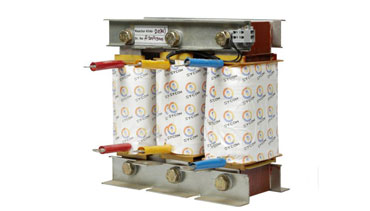In a power system, a reactor refers to a device used to control or modify the flow of electric current. Reactors are passive components, typically consisting of coils of wire wound around a core made of magnetic material such as iron. They are primarily used for several purposes in power systems:
Reactive Power Compensation
Reactors can be used to compensate for reactive power in an electrical system. Reactive power is required for the establishment of magnetic fields in inductive components like motors and transformers. By adding reactors to a power system, the reactive power balance can be adjusted, improving voltage stability and reducing losses.
Voltage Regulation
Reactors can help regulate voltage levels within a power system. By controlling the flow of reactive power, reactors can adjust voltage levels to keep them within acceptable limits, especially during periods of high demand or when the system experiences voltage fluctuations.
Current Limiting
Reactors can limit the flow of current in a circuit, acting as a current-limiting device. This can protect sensitive equipment from damage due to overcurrent conditions or short circuits.
Harmonic Filtering
Reactors can be used to filter out unwanted harmonics in the electrical system. Harmonics are multiples of the fundamental frequency of the power system and can cause disturbances and inefficiencies in the operation of electrical equipment. Reactors can help mitigate these effects by blocking or attenuating harmonics.
Fault Current Limiting
In the event of a fault in the power system, reactors can help limit the magnitude of fault currents, thereby reducing stress on equipment and minimizing damage.
Reactor types include air-core reactors, iron-core reactors, and other variations designed for specific applications. They are essential components in power system engineering for maintaining stability, reliability, and efficiency in electrical grids.


